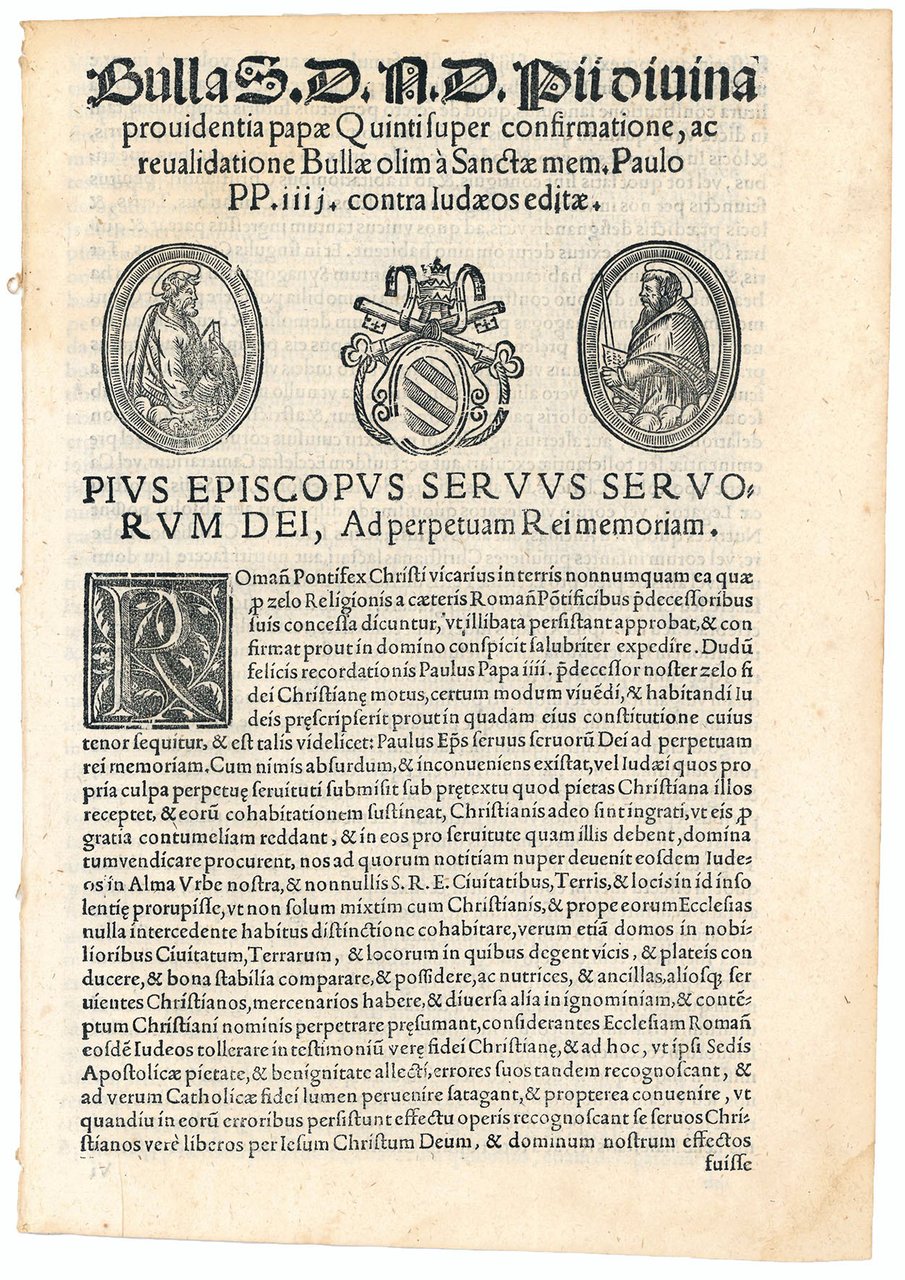
Libros antiguos y modernos
PIUS V Pope (1504-1572)
Bulla S.D.N.D. Pij divina providentia papae Quinti super confirmatione, ac revalidatione Bullae olim à Sanctae mem. Paulo PP. IIIJ. contra Iudaeos aeditae. Colophon: Romae Apud Antonium Bladum Impressorem Cameralem. Anno. 1566
Antonio Blado, 1566
4900,00 €
Govi Libreria Antiquaria
(Modena, Italia)
Los gastos de envío correctos se calculan una vez añadida la dirección de envío durante la creación del pedido. El vendedor puede elegir uno o varios métodos de envío: standard, express, economy o in store pick-up.
Condiciones de envío de la Librería:
Para los productos con un precio superior a 300 euros, es posible solicitar un plan de pago a plazos al Maremagnum. El pago puede efectuarse con Carta del Docente, Carta della cultura giovani e del merito, Administración Pública.
Los plazos de entrega se estiman en función de los plazos de envío de la librería y del transportista. En caso de retención aduanera, pueden producirse retrasos en la entrega. Los posibles gastos de aduana corren a cargo del destinatario.
Pulsa para saber másFormas de Pago
- PayPal
- Tarjeta de crédito
- Transferencia Bancaria
-
-
Descubre cómo utilizar
tu Carta del Docente -
Descubre cómo utilizar
tu Carta della cultura giovani e del merito
Detalles
Descripción
The bull Romanus Pontifex was issued on 19 April 1566 and publicly affixed on 1 May 1566.
Pius V was “the pontiff who reinforced the dire edicts of Paul IV (1555-1559) and, then, in 1569, went further by expelling Jews from all parts of the Papal State, save Rome and Ancona […] Outside of the Papal State itself, Pius's policies did not always succeed; we see this clearly with regard to the Jews. Romanus Pontifex, of 19 April 1566, extended Paul IV's decree Cum nimis absurdum (which it cites verbatim), throughout all Catholic, or at least all Italian, realms, followed by Cum nos nuper of 19 January 1567, whose subject was the obligatory sale of Jewish private property or its devolution to a domus cathecumenorum or a monte di pietà, should the Jews not sell the property themselves. But these new bulls were not always applied. Or they were applied only years later […] The Jews of Rome thus had to cope with a permanent state of ambivalence, which was rooted in the already mentioned oxymoron of repression tempered by a degree of permissiveness. Jews could maintain their community, their methods of selfcontrol, their daily and family lives, and most importantly, that part of their economy – highly restricted as it had been from the time of Paul IV – that allowed some breathing room, namely, lending at interest, the income from which had a way of trickling down to benefit more than just the lenders themselves (at least until 1682 and the closing of Rome's Jewish banks, when near universal poverty ensued). But they had also been expelled, crowded together in a tiny precinct, and put under the thumb of a single (Inquisitional) overseer […] This ambivalent policy, the desire to repress Jews until they abandoned Judaism, paralleled by the obligation to observe limits, would remain in effect until the Roman Ghetto fell in 1870” (K. Stow, More than meets the eye: Pius V and the Jews, in: “Dominikaner und Juden: Personen, Konflikte und Perspektiven vom 13. bis zum 20. Jahrhundert”, E. Füllenbach & G. Miletto, eds., Munich-Boston, 2015, pp. 375, 378, and 392-393).
Edit 16, CNCE42201; S. Emerenziana Vaccaro, Catalogo delle edizioni romane di Antonio Blado Asolano ed eredi (1516-1593), Rome, 1961, no. 1924.

